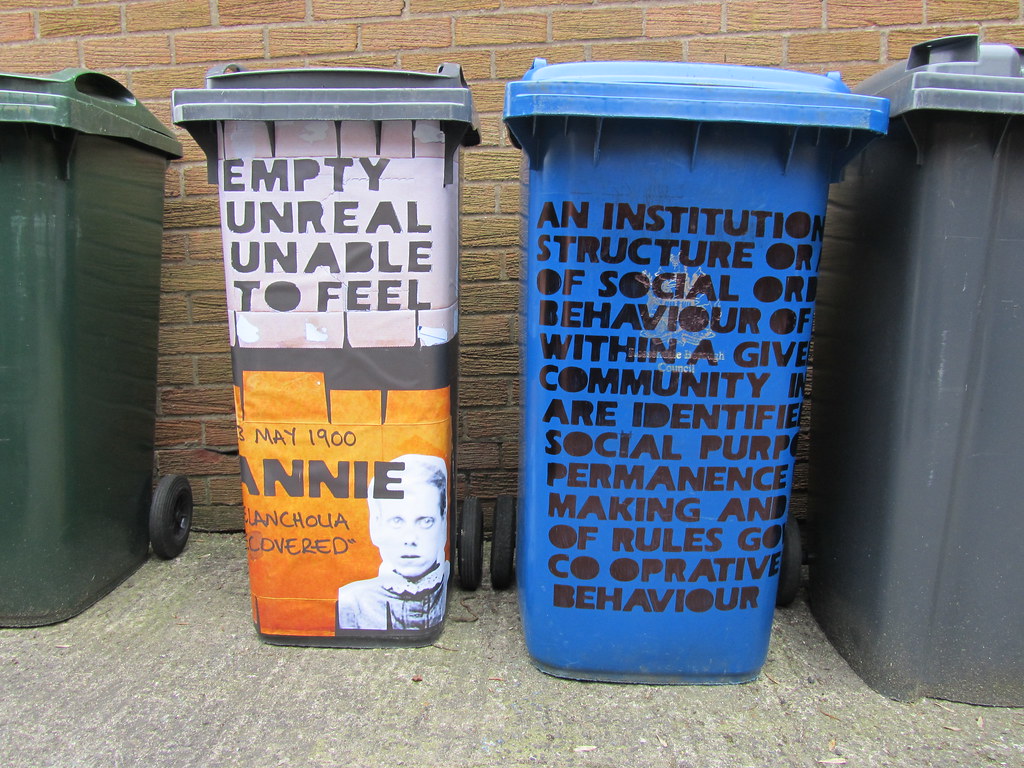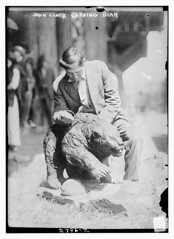Two obituaries came to my attention this morning. Both women died more than a year ago, but I'm just seeing these now. If I write about them here, I won't forget to follow up with getting Wikipedia entries going about them, when the time allows.
I first mentioned
Anita Lee Blair (pictured at left, a white woman dressed in a dark suit, in a portrait with her guide dog Fawn) at this blog a few years ago, when David Paterson had become Governor of New York, and the topic of
blind elected officials was
in the news. Anita Blair was born in 1916, and became blind after head injuries sustained in a car accident, not long after graduating from high school (no seatbelts or safety glass in the 1930s). She graduated from the Texas College of Mines and Metallurgy; later she earned a master's degree as well. She was the first person in El Paso to receive a guide dog, a German shepherd named Fawn; she even made
a short film about Fawn, to use on her lecture tour. Fawn and Anita made headlines in 1946, when they
escaped a deadly hotel fire in Chicago. As far as anyone can tell, she was the first blind woman ever elected to any state legislature--she served one term in the Texas House of Representatives, 1953-55. (
Here's a Time Magazine article mentioning that she won the Democratic nomination for that race.) She was also the only woman appointed to Harry Truman's Presidential Safety Committee, the first person to bring a service dog onto the floor of the US Senate, and later was a familiar presence in El Paso, vocal on talk radio and at city council meetings.
Anita Lee Blair died in 2010, just a couple weeks before her 94th birthday, survived by her slightly younger sister Jean. Upon her passing, the Texas House of Representatives passed
a resolution in tribute to their former member. There's
a video of Blair talking about her life on youtube (not captioned), and her
El Paso Times obituary included
a photo gallery from news files.
Betty G. Miller's obituary turned up in this month's Penn State alumni magazine. (Miller is pictured at right, a white woman wearing a hat and glasses, with a big smile.) She was a deaf child of
deaf parents, and learned ASL as a child at home, but was sent to oral education programs also, an experience that became a theme in her works. Betty Miller was an artist, an art educator (she had an EdD from Penn State, and taught at Gallaudet), an author, and by her own account the first deaf person to receive certification as an addiction counselor. In 1972 she had her first one-woman show, "The Silent World," at Gallaudet. Further shows followed over the next several decades, and a large-scale neon installation by Miller is in the lobby of the Student Activities Center at the Eastern North Carolina School for the Deaf. She was survived by her partner, artist Nancy Creighton. Some of Miller's works can be seen in
this Wordgathering article by Creighton and at
this Pinterest board.
Apparently, this is post #1000 at DSTU, according to Blogger (I suspect that count includes some drafts that didn't ever get posted, for various reasons). Happy 1000 to our readers, then!
























